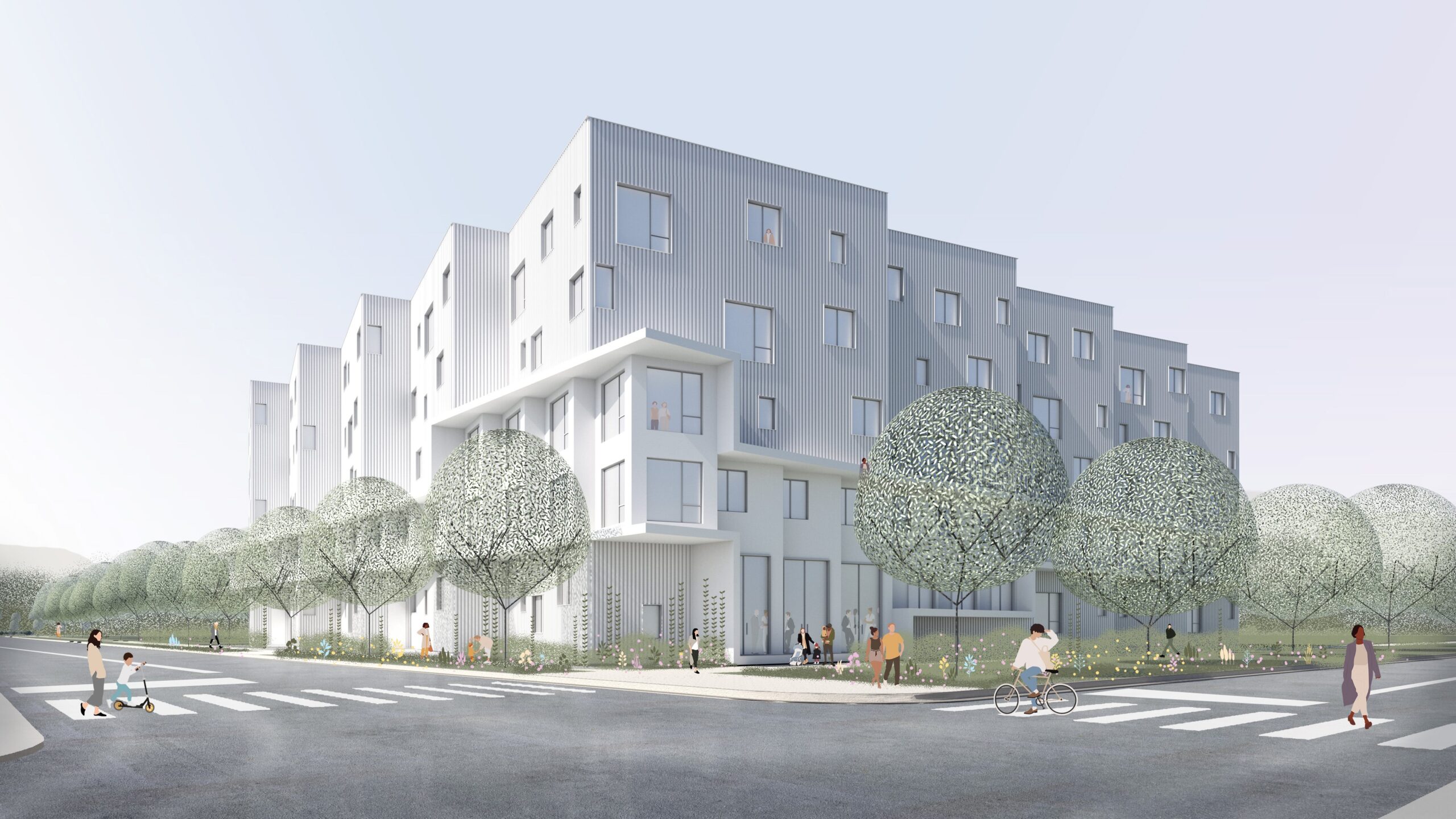Colorado’s Middle Income Housing Tax Credit: An Innovative Solution to a Country-Wide Problem
Program Announced First Round of Funding Awards in July

By Michael Murney
8 min read

Across the U.S., an increasing housing shortage and rising costs have strained renters’ budgets for years. While low- and very low-income households continue to face significant impacts, market conditions have also created a “missing middle” — renters whose income is too high to qualify for housing supported by traditional federal low income housing tax credits but still too low to afford market-rate rents.
In response, a number of states have begun rolling out programs aimed at housing middle-income renters. These range from property tax exemptions and fee waivers to grants, loans or other direct subsidy. However, until recently, no state had implemented any kind of tax credit exclusively aimed at middle-income housing.
That changed last year, when Colorado launched a pilot program establishing the Colorado Middle Income Housing Tax Credit (MIHTC) — the nation’s first. In July of this year, awards were announced for the first round of MIHTC funding, showing the potential for such a subsidy in a state like Colorado, where developers and policy experts say middle-income housing needs are especially acute.

“MIHTC was pitched as a pilot to see if we could make something work in this state for those who are living in communities where their incomes are too high for a Low Income Housing Tax Credit (LIHTC) project, but too low to afford the rent in their community,” says Brian Rossbert, executive director of Housing Colorado, a statewide membership organization supporting the affordable housing sector. “I’m excited to see if this pilot is able to work right and function in our current housing market.”
New Solution for a Growing Challenge
Colorado’s MIHTC pilot was created following the passage of Colorado House Bill 24-1316 in May of last year. The bill authorized Colorado Housing and Finance Authority (CHFA) to oversee $40 million in total funding, to be awarded over five years. The program is set up to help finance development of affordable housing for households and families making between 80 percent and 120 percent Area Median Income (AMI). The program additionally stretches to assist 140 percent AMI households in rural resort communities.
Colorado’s MIHTC is modeled after the federal LIHTC program and includes a 15-year minimum affordability term, with five year standalone credits claimed ratably.
MIHTC’s first funding round awarded a total of $4,832,748 in credits to three developments — two in the greater Denver area, and one in Fraser, a rural resort community in Grand County. These developments will add 220 affordable apartments for middle-income households to Colorado’s housing stock, including 150 three- and four-bedroom units across all three projects:
- St. Louis Landing Building C will be built in Fraser, and received $1,542,722 in MIHTC. Sponsored by the Fraser Housing Authority, this development will feature units for both individuals and families, with 26 units designated for 80 percent AMI, 38 for 100 percent AMI and six for 120 percent AMI.
- Elmwood North, a development planned for the northwest Denver metro area and sponsored by Delwest, received a $1,650,000 MIHTC award to produce 70 four-bedroom units for middle-income families. 35 units are designated for 80 percent AMI and 35 for 90 percent AMI.
- Park Place Apartments represents the largest development. Sponsored by Evergreen Real Estate Group, the project will be constructed in Denver’s rapidly changing Sun Valley neighborhood with support from $1,640,026 in MIHTC. Park Place will serve both individuals and families with 60 three-bedroom and 20 four-bedroom units. 20 are designated for 80 percent AMI; 20 for 90 percent AMI; 20 for 100 percent AMI; and 20 for 120 percent AMI.
These selections reflect the unique set of challenges for middle-income Coloradans posed by market dynamics specific to Colorado. In Denver, many households have been priced out of the city proper as its population has ballooned in recent years, putting pressure on the city’s existing housing stock and causing prices to rise dramatically. These conditions have been magnified for Colorado’s many rural resort communities, where housing has become unattainable for all but the highest earners.
“There are a number of places — not just on the Front Range, where a lot of the population lives, but out in our rural resort communities — where AMI levels don’t necessarily match up with the LIHTC program,” says Rossbert.

In Denver proper, developers say that recent market conditions resemble those that have priced working families out of many rapidly growing urban centers across the U.S. “When you look at the demographics of a household at 80 percent AMI that may have three or four people in the household, you’re not really making it with a market rate unit that’s large enough,” says Javonni Butler, vice president of development at Evergreen Real Estate Group.
Indeed, according to current data from the National Low Income Housing Coalition, the annual income needed to afford a four-bedroom apartment in Colorado is $114,391 — over $2,000 more than the AMI within the census tract where Park Place Apartments (the development sponsored by Evergreen) will be built.
This has had significant impact on Denver, Butler says. “Families have been moving out of the city in droves. Schools have been closing because we don’t have families in our city. You see it all throughout the country, but in Denver, it’s fairly stark.”

The Path to MIHTC
Within the affordable housing industry, federal subsidies for middle-income earners have sometimes been viewed as a diversion of scarce federal resources away from financing developments for low- and extremely low-income renters — the populations most severely impacted by the nation’s growing affordability crisis.
In 2023, a bipartisan coalition of U.S. senators introduced The Decent, Affordable, Safe Housing For All (DASH) Act. The DASH Act included (among a litany of other federal housing provisions) the Workforce Housing Tax Credit (WHTC), which would have established a federal MIHTC program meant to “increase the supply of affordable housing for middle-income families who earn too much to qualify for low-income affordable housing and not enough to afford housing near where they work,” according to a press release from then-finance committee chairman Ron Wyden (D-OR). The program would have financed development of 344,000 rental homes over 10 years if passed, according to Novogradac.
Modeled on the federal LIHTC program, the WHTC included a proposed mechanism that would have allowed state housing finance agencies to divert WHTC allocations into their preexisting LIHTC program (according to specific local and regional needs). The bill also included provisions that would have allowed developers to leverage both LIHTC and WHTC to finance the same project.
Some industry advocates opposed the program. In a 2023 report, the nonprofit National Low Income Housing Coalition (NLIHC) argued that, at the time, only one percent of renters nationwide spending more than 50 percent of their income on rent were middle-income earners, meaning that the proposed WHTC would amount to a subsidy for developments that market incentives had already generated.
The DASH Act never received a vote and eventually stalled in the Senate Finance Committee.
In Colorado, however, it seems that lawmakers feel differently about middle-income housing assistance. In 2017, for example, CHFA established the Middle Income Access Program (MIAP), which has leveraged mezzanine debt financing to add over 1,300 units to Colorado’s middle-income affordable housing stock, according to Kathryn Grosscup, CHFA’s manager of housing tax credits.
In 2022, lawmakers also created the Colorado Middle Income Housing Authority, a body independent from the state government that finances middle-income rental units using bonds and public–private partnerships.
The MIHTC program was added to the already considerable list of resources subsidizing middle-income affordable housing because, simply put, the need is still there. “The MIHTC program was created in response to community feedback regarding the need for more housing options affordable to middle-income households,” says Grosscup.

“In more than half of Colorado’s counties, a two-person household with both individuals working full-time minimum-wage jobs qualifies as middle income, earning above 80 percent AMI,” Grosscup explains. “Over the past decade, Colorado’s middle-income renter households have seen a 48 percent increase in the number of households classified as cost burdened (spending more than 30 percent of their income on housing costs).”
Still, the program drew some criticism from advocates as a wasteful diversion of public affordable housing dollars away from projects for the most cost-burdened Coloradans; the NLIHC again opposed the effort.
However, Butler says that the state MIHTC program “strengthens all housing” rather than diverting resources away from traditional low-income development, noting that there is an existing, funded state LIHTC program that pairs with federal credits.
Rossbert echoes Butler’s outlook. “With the MIHTC program, we’re doing two things at the same time: We’re expanding the state credit as well as piloting a middle-income program,” he explains. “So this isn’t necessarily a competition for resources with LIHTC. We are trying to expand the funding pie, not divvy up what was already there.”
